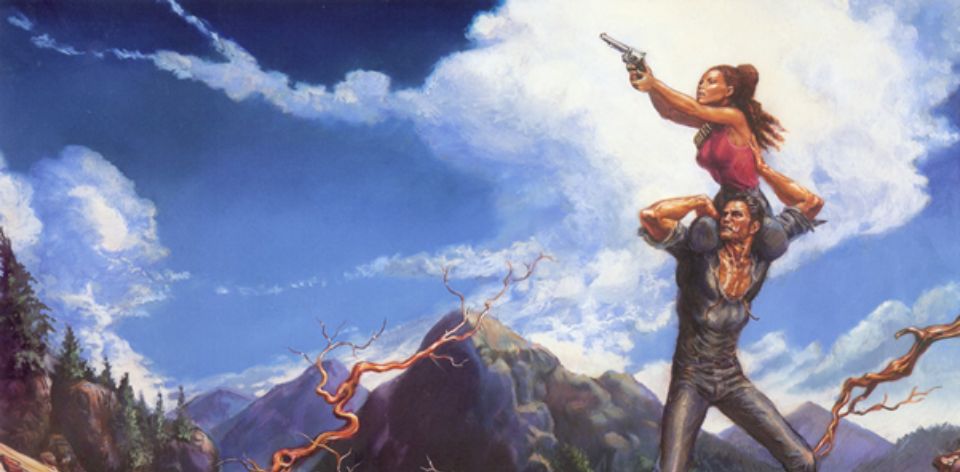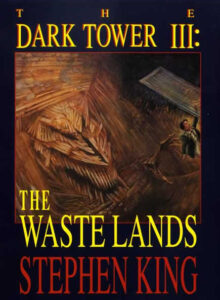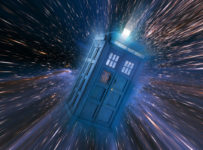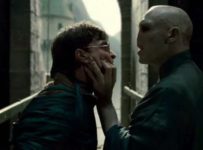Welcome back to Inconstant Reader, the feature column that explores Stephen King’s books in the order they were published — sort of! Warning: this palaver contains spoilers, ya ken?
“These fragments I have shored against my ruins.“
—T.S. Eliot, The Waste Land (1922)
Named for Eliot’s modernist poem, the third chapter in Stephen King’s The Dark Tower saga begins to settle into the grander arcs of the cycle. Less fragmented and episodic than its predecessors, The Waste Lands unfolds more like an epic road story—mirroring earlier volumes while expanding the mythology and driving the quest forward.
As we saw in The Drawing of the Three, Roland begins assembling his ka-tet by pulling companions from 20th-century New York through three mysterious doors: Eddie Dean, a heroin addict with a sharp mind; and Odetta/Detta Holmes, whose battling identities merge into the formidable Susannah Dean. Roland also confronts Jack Mort, a sadist whose crimes link back to both Odetta and Jake Chambers. Though that novel widened the scope of King’s vision, the ka-tet remained incomplete—Jake’s absence haunting Roland, and the Man in Black reduced to memory.
In The Waste Lands, Roland continues his quest for the Dark Tower with Eddie and Susannah. But from the outset, it’s clear that time and memory are out of joint. By killing Mort and preventing Jake’s death—the very death that once led Jake and Roland to meet at the Way Station in The Gunslinger—Roland has triggered a paradox that’s tearing his mind apart.
To restore balance, the group must draw Jake Chambers back into Mid-World, unravelling the threads of his splintered existence. After encountering Shardik, a massive, malfunctioning cyborg bear, the ka-tet begins following one of the six Beams that hold all of reality together.
Meanwhile, in a world more like our own, Jake is undergoing his own mental rupture, drawn toward a doorway to Mid-World from 1977 New York. Among the strange clues leading him there is a children’s book, Charlie the Choo-Choo, which seems to wink at deeper, multiversal truths. These eerie nods to the Tower, including a rose blooming in an empty lot, signal that the boundaries between worlds are growing dangerously thin. These ‘thinnies’, or weak spots in reality, become even more prominent in the next book, Wizard and Glass. As a fun side note, Charlie the Choo-Choo was eventually published by King in the real world in 2016, and reappeared in another universe when Lisey’s Story was adapted for television in 2021).
King masterfully juxtaposes the quests in both worlds, building tension through sharp cross-cutting between timelines. By the time their dual ordeal is over, Jake—not to mention Oy, a small creature known as a billy bumbler—has joined the group. The ka-tet is complete, but they are soon parted on separate elements of the quest.
Yet the book also contains one of its most troubling sequences: Susannah allowing ‘Detta’ to emerge in order to engage sexually with a demonic incubus, ostensibly to aid in opening the door. The scene is graphic, played for tension, but laden with uneasy implications. Even on a re-read, it’s difficult to reconcile—especially given King’s recurring pattern, across works like It (in which Beverley Marsh undergoes a ritualised sexual rite) and much later The Green Mile, of subjecting women and characters of colour to sexual or violent trauma as a route to empowerment, often in service of a white protagonist’s arc.
As the narrative progresses, King begins to define what it means that Roland’s world has “moved on.” Glimpsed only in fragments in the earlier books, we now see that it was once vast and powerful, but has decayed into a fallen civilisation full of echoes from Earth. The ka-tet’s journey takes them across this warped and dying landscape to the city of Lud, home to warring factions—the Pubes and the Grays. Their confrontation with the Tik-Tok Man, the Grays’ deranged leader, brings the group to some dark and transformative places.
Planting seeds for Wizard and Glass, King leaves us with a memorable cliffhanger. In the final moments, the group meets Blaine, a deranged, riddle-obsessed monorail AI with a death wish. It’s a stunning end—one that left Constant Readers in 1991 without a resolution for six long years.
Don’t ask me silly questions! I won’t play silly games! When Constant Reader returns, we will board Blaine the Mono and head towards Topeka, Kansas in Wizard and Glass.






